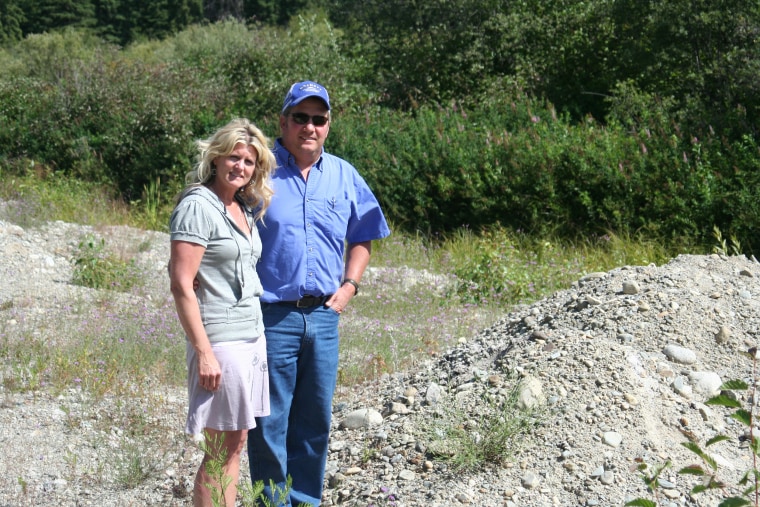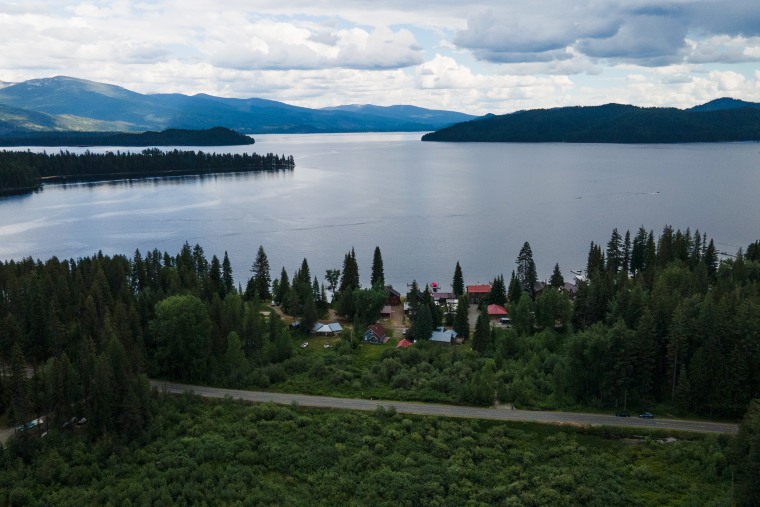WASHINGTON — The Supreme Court on Thursday significantly weakened a landmark water pollution law by ruling that an Idaho couple's property does not include wetlands subject to federal oversight under the law.
The ruling, in which all the justices agreed in the outcome but differed on the legal reasoning, concluded that Mike and Chantell Sackett's land does not fall under jurisdiction of the 1972 Clean Water Act, so they do not require a federal permit to build on the property.
The decision ends a yearslong battle between the Sacketts and the federal government and is a victory for conservative groups and business interests opposed to the broad application of the water pollution law.
President Joe Biden criticized the decision, saying it "upends the legal framework that has protected America's waters for decades." The ruling "defies the science that confirms the critical role of wetlands in safeguarding our nation's streams, rivers and lakes from chemicals and pollutants," he said in a statement.
Damien Schiff, the Sacketts’ lawyer, said the decision “returns the scope of the Clean Water act to its original and proper limits.” The decision marks a “profound win for property rights and the constitutional separation of powers,” he added.
The ruling is another example of the court's conservative justices powering a decision that curbs broad power of federal agencies, a consistent theme in recent years.
In reaching its broader legal conclusion, the court ruled on a 5-4 vote in an opinion authored by conservative Justice Samuel Alito that Clean Water Act jurisdiction extends only to wetlands that are "indistinguishable" from larger bodies of water by having a "continuous surface connection."
The wetlands on the Sacketts' property, he wrote, are "distinguishable from any possibly covered waters."
The ruling will alleviate some burdens on landowners, including major business interests, Alito said, because the law "can sweep broadly enough to criminalize mundane activities like moving dirt."
The impact will be felt nationwide, with environmental groups saying millions of acres of wetlands will no longer be under federal jurisdiction. Unless states move to strengthen their own environmental laws, property owners will have considerable freedom to fill in wetlands without going through the federal permitting process previously required.
Conservative Justice Brett Kavanaugh joined the court's three liberal justices in disagreeing with the majority's new test.
"By narrowing the act's coverage of wetlands to only adjoining wetlands, the court's new test will leave some long-regulated adjacent wetlands no longer covered by the Clean Water Act, with significant repercussions for water quality and flood control throughout the United States," he wrote.
Under the court's new approach, the ability to regulate the levee system on the Mississippi River and effectively oversee the Chesapeake Bay could both be threatened, Kavanaugh said. Levees dividing wetlands from the Mississippi River mean those wetlands could be outside of federal oversight and wetlands vital to the the Chesapeake Bay could be filled in without requiring federal permits, he said.
In a separate opinion, liberal Justice Elena Kagan took aim at the majority for rewriting a statute that Congress had enacted. She compared the ruling with the court's decision last year to limit the scope of the Clean Air Act as part of efforts to combat climate change.
"The vice in both instances is the same: the court's appointment of itself as the national decision-maker on environmental policy," she said.
The case saw the Sacketts return to the Supreme Court for the second time after the justices ruled in their favor in an earlier case in 2012. Both cases involve the same underlying dispute: their effort to build a property on land they own in Priest Lake, Idaho, parts of which the EPA has deemed a protected wetland, meaning the land is subject to federal jurisdiction and building on it requires a permit.

The legal dispute focused on whether the Sacketts could challenge an EPA compliance order in court after they had filled the affected area with gravel and sand without obtaining a permit. The fight, which began in 2007, continued over whether the land was a wetland at all.
The Sacketts returned to the Supreme Court after the 9th U.S. Circuit Court of Appeals, based in San Francisco, ruled in August 2021 in favor of the federal government in its determination that the area did constitute a wetland.
The law on how to define a wetland — of key interest to property developers and other business interests — has long been muddled and was not resolved when the Supreme Court decided an earlier case on the issue. In 2006, four justices said the Clean Water Act covered wetland with a “continuous surface connection” to a waterway, but there was not a clear majority. Justice Anthony Kennedy, who provided the fifth vote in that 5-4 ruling, came up with his own test, which said the law provided jurisdiction over wetlands with a “significant nexus” to a waterway.
Successive presidential administrations have sought to bring clarity to the law, with Democrats generally favoring greater federal power and Republicans, backed by business interests, saying that Clean Water Act jurisdiction should be limited.
In Thursday's ruling, the court rejected the significant nexus test and appeared to embrace the approach taken by the four-justice bloc in the 2006 case.
Sam Sankar, a lawyer at environmental group Earthjustice said up to 90 million acres of formerly protected wetlands could now be under threat.
With liberal-leaning states likely to enact new wetland protection laws, "the on-the-ground impacts will be most severe in states that are most favorable to polluters and least interested in environmental protections," he added.
While environmental activists were downbeat, the business community was delighted with a decision that will be a boon for companies across various industries, including energy and construction.
“The Supreme Court has provided long overdue relief for companies and landowners across our nation,” said Marty Durbin, a senior official at the U.S. Chamber of Commerce.
The Biden administration finalized its own rule in December that largely reverted to the interpretation that existed prior to actions taken by both the Obama and the Trump administrations, although the new rule had already faced its own legal challenges. As a result of the Supreme Court ruling, the EPA will now have to return to the drawing board.

